Which are the most fascinating archaeological discoveries in Caesarea Maritima? Well, this post is going to introduce you to the rarest finds! For example, did you know that the largest cash of gold coins was found in Caesarea? Also, did you know a marble ram dated to the Byzantine era was found there as well? So you if you want to know more, you should scroll down!
The Theater at Caesarea Maritima
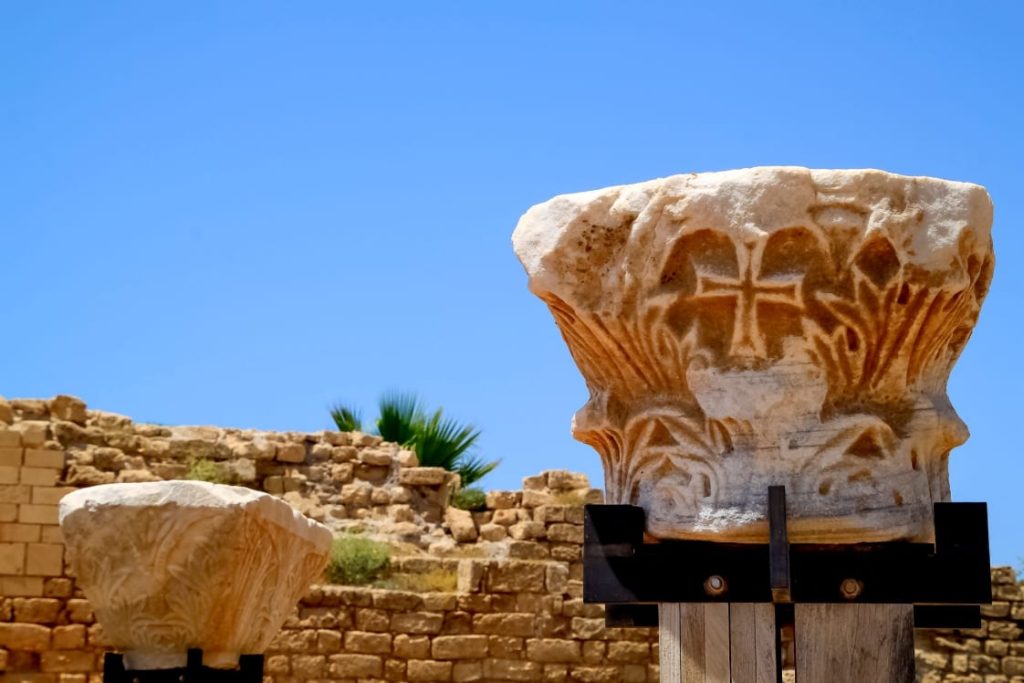
The city was first established as a small Phoenician port. The place is called “Migdal Sharshon” (Stratton Tower), probably from the distortion of the name of the Sidon god Ashtoreth. In 90 BCE, the settlement was conquered by Alexander the Great and annexed to the Hasmonean kingdom. In 31 BCE, after winning the Battle of Actium, the Roman emperor Augustus gave the settlement, along with the entire shoreline of the Land of Israel, as a gift to Herod. Herod, for his part, named the city after the emperor Augustus. so in 22 BCE, he built a large port, many facilities like the Circus Maximus; baths, and Roman temples. The port was established in Caesarea due to its location in the center of the country, close to agricultural areas, and convenient access roads.
#1 on Archaeological Discoveries in Caesarea Maritima
So number one on my list of archaeological discoveries in Caesarea Maritima is the recent archaeological discovery found at the Port of Caesarea. So 2,000 gold coins from about 1,000 years ago were discovered at the seafloor of the ancient port. In fact, Six divers are responsible for the discovery of the treasure. But how did the coins get there?
So the divers initially thought it was monopoly coins or something like that. But after realizing that it was a real treasure they collected some coins with them. Then they reported it to the director of the dive club at the port. Immediately the director passed the information to the Antiquities Authority’s Marine Archeology Unit, and the authority’s divers – along with the same group of divers – discovered no less than 2,000 gold coins from about 1,000 years ago in various denominations (dinar, half a dinar, and quarter dinar) as well as different sizes, sizes and weights.
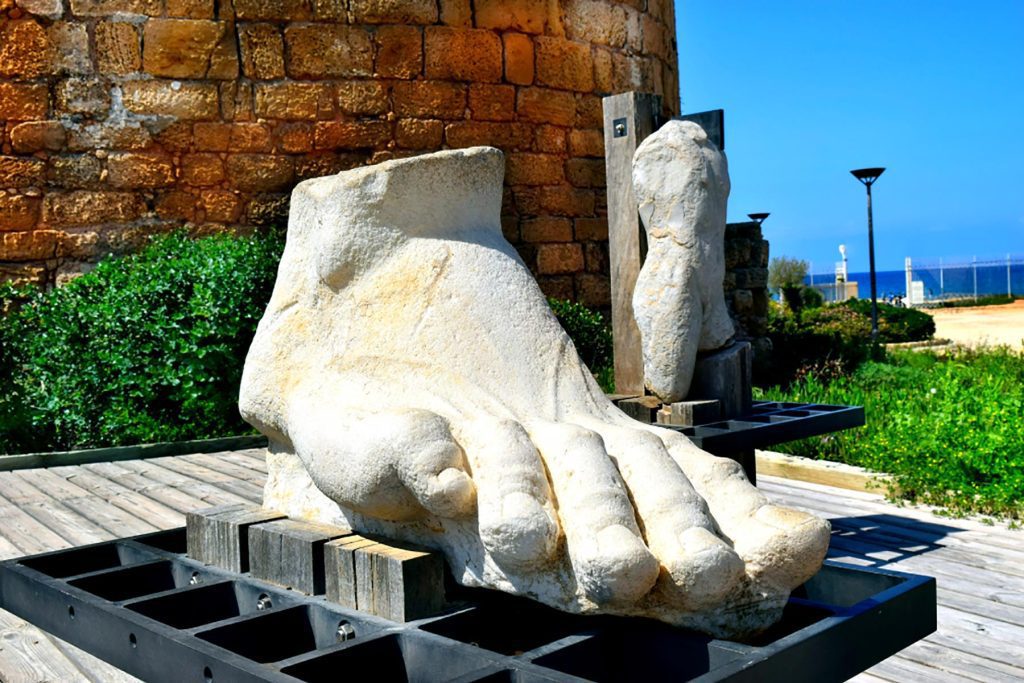
It is possible that this was a ship that was wrecked in the area, and that carried tax money that was on its way to the central government in Egypt, and possibly a treasure trove of coins intended to pay salaries to the garrison that sat in Caesarea and defended the city. Another belief is that the treasury was the cash of a large merchant ship that traded with the coastal cities in the Mediterranean, and sank here.
Let’s tTalk About the Identity of the Ship!
So the currency expert expanded and said that the coins unearthed date from the Fatimid period (11th century CE) and were in circulation even after the Crusader era. Especially in the port cities through which international trade took place. In addition, some of the coins found in the treasure were crooked and bore bite marks. Probably evidence of a physical examination by the teeth, made by their owners or merchants. The oldest coin that was unearthed is a quarter dinar! And was minted in Palermo, Sicily in the second half of the 9th century CE. In addition, most of the coins belong to Khalif al-Hakim and his son al-Zahir, who lived in the 10th and 11th centuries. In other words quite an archaeological discovery in Caesarea Maritima!
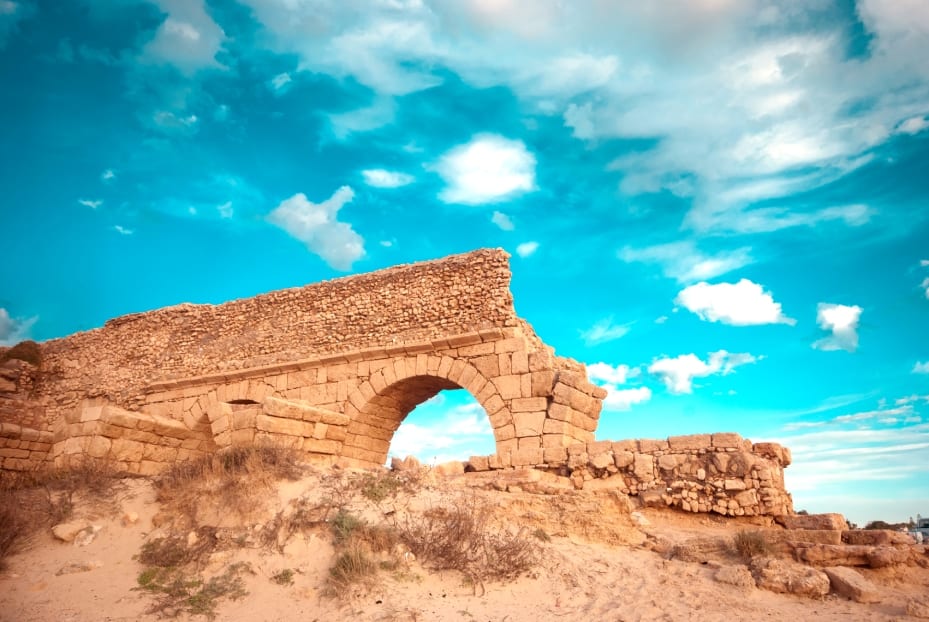
The Fatimid kingdom, to which the currency treasury belonged, was extremely rich and its wealth was enormous! Historical records indicate that the capital, Cairo then had 12 million gold dinars! Now, during this period, Caesarea flourished and prospered. Moreover, there was lively trade with other port cities, despite the poor condition of the port, built by Herod in the Roman period, 1,000 years earlier. Today, the coins are displayed in the new Caesarea’s visitor center!
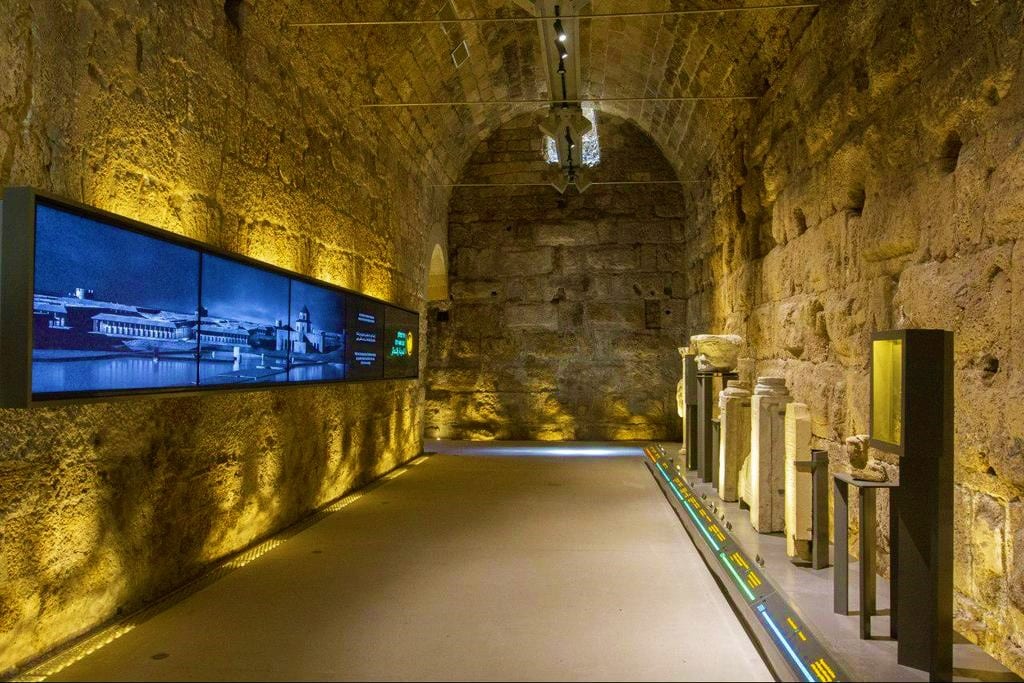
Archaeological Discoveries in Caesarea Maritima: The Pilate Stone
Another one that sits high on my list of ‘Archaeological Discoveries in Caesarea Maritima’ is the Pilate Stone! Now the Pilate stone is a damaged block of carved limestone with a partially intact inscription attributed to, and mentioning, Pontius Pilate, a prefect of the Roman province of Judea from 26 to 36 CE. It was discovered at the Roman Theatre in secondary use in the excavations in 1961.
The artifact is particularly significant because it is an archaeological find of an authentic 1st-century Roman inscription mentioning the name “[Pont]ius Pilatus”. It is contemporary to Pilate’s lifetime and accords with what is known of his reported career. In effect, the inscription constitutes the earliest surviving, and only contemporary record of Pilate; who is otherwise known from the New Testament. Also, he’s is mentioned the Jewish historian Josephus and writer Philo, and brief references by Roman historians such as Tacitus. In fact, it is the only archaeological evidence to this day that mentions the name of Pilate.

Pontius Pilate likely made his base at Caesarea Maritima. On this site, the stone was discovered since that city had replaced Jerusalem as the administrative capital and military headquarters of the province in 6 CE, Pilate probably traveled to Jerusalem, the central city of the province’s Jewish population, only when necessary. The Pilate stone is currently located at the Israel Museum in Jerusalem. Plaster-cast replicas can be found at the Archaeological Museum in Milan, Italy, and on display in Caesarea Maritima itself.
1,700 y old SarcophagusDecorated With Reliefs of A Medusa
Along Caesarea National Park there are lots of Archaeological items on display to the public. In the recreational Port of Caesarea, a new and unique archeological display of its kind is accessible for visitors to enjoy. One of the items is a unique 1,700-year-old sarcophagus (coffin) lid, one of the most impressive recently discovered. The sarcophagus lid, which has been preserved almost intact, is adorned with Medusa heads adorned with snakes and masks.
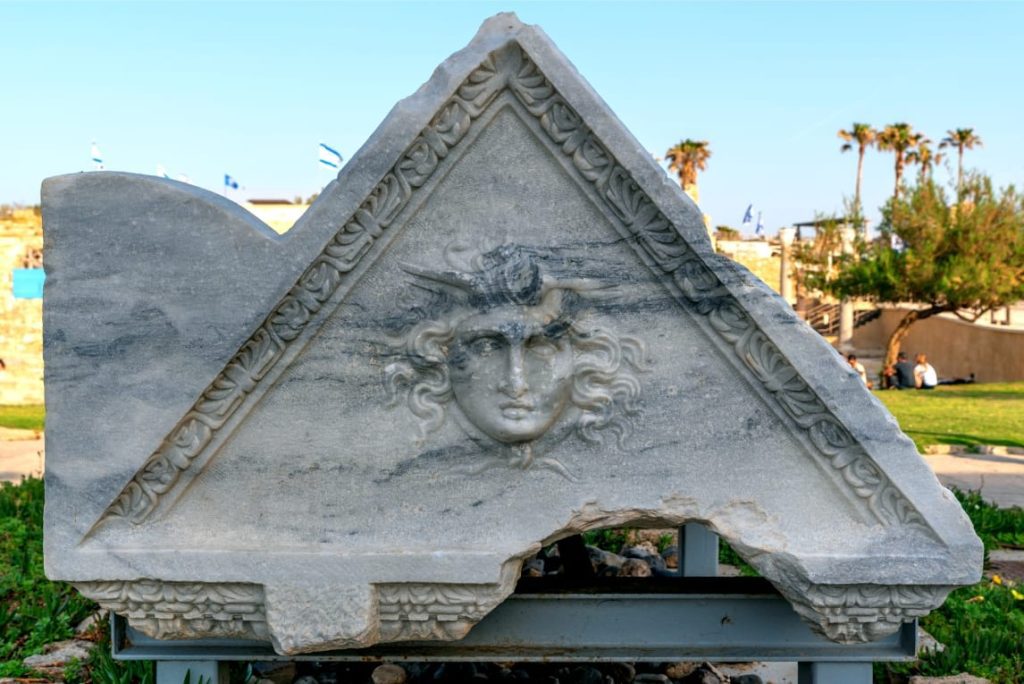
The masks adorning the sides of the lid are taken from the world of ancient theater: on one side of the lid was smiling masks – that is, decorated with snake-adorned Medusa heads and masks with sad and happy expressions. These were taken from the world of ancient theater, in which two types of plays were practiced: comedy and tragedy. The word Medusa in Greek means ‘keeper’; Whoever looked directly at the mythological Medusa immediately became a stone. In ancient times it was customary to create reliefs of Medusa, among other things, on tombs and various shields, in the hope that this would ward off the threat. Indeed Among the unique Archaeological Discoveries in Caesarea Maritima!
Burial in Sarcophagi
Burial in sarcophagi was common in the Mediterranean basin in the 5th-2nd centuries. This burial practice first existed among pagans, and later was adopted among the Jews, Christians, and Samaritans. The word ‘sarcophagus’ originates from the Greek meaning “flesh-eater”. The sarcophagi have two parts: a rectangular box for placing the deceased and a lid. The sarcophagi were buried inside burial structures (mausoleum) or in hewn burial caves.
The impressive coffin lid, which appears to have been used to bury one of Caesarea’s richest people in Roman times, is one of a variety of unique stone items unearthed in Caesarea in archeological excavations and other ways and displayed at Caesarea Port. The items are a living and tangible testimony to the rich past life of Caesarea as a Roman, provincial, vibrant capital city.
Archaeological Discoveries in Caesarea Maritima: A Byzantine Marble Ram
In the Byzantine period, Caesarea was an important Christian center, where some of the Church Fathers lived. Caesarea has an important status in the eyes of Christians. According to Christian tradition in Caesarea, the first pagan, Cornelius, converted to Christianity. You can read more about this subject in my post about Caesarea as an Important Christian Center!
So find a marble ram in the excavations is no surprise to me! The marble ram was unearthed near a Byzantine-era church (6th – 7th centuries CE) in Caesarea in December 2015. Caesarea never ceases to surprise as evidenced by this amazing statue. Now In ancient Christianity, Jesus was not portrayed as a person. Instead, symbols were used, one of which was the ram. It may or may not be a coincidence, but the statue was uncovered on Christmas Eve!
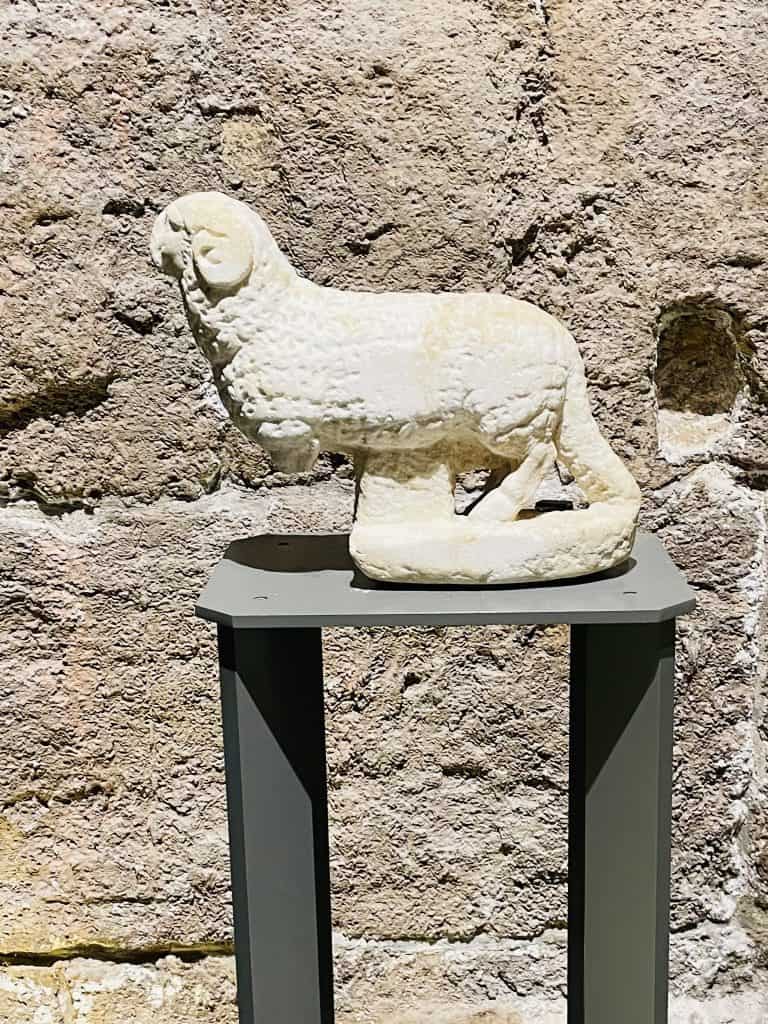
Christian or Roman?
Or the statue might have been part of the decoration of a Byzantine church at Caesarea! It’s hard to know really since archaeological evidence is silent and it’s all a matter of interpretation. But we know that In Christian art the ram is often depicted carried on the shoulders of the ‘Good Shepherd’ (that is, Jesus, who is portrayed as the shepherd tending his flock); and sometimes the ram is situated to the left or right of Jesus.
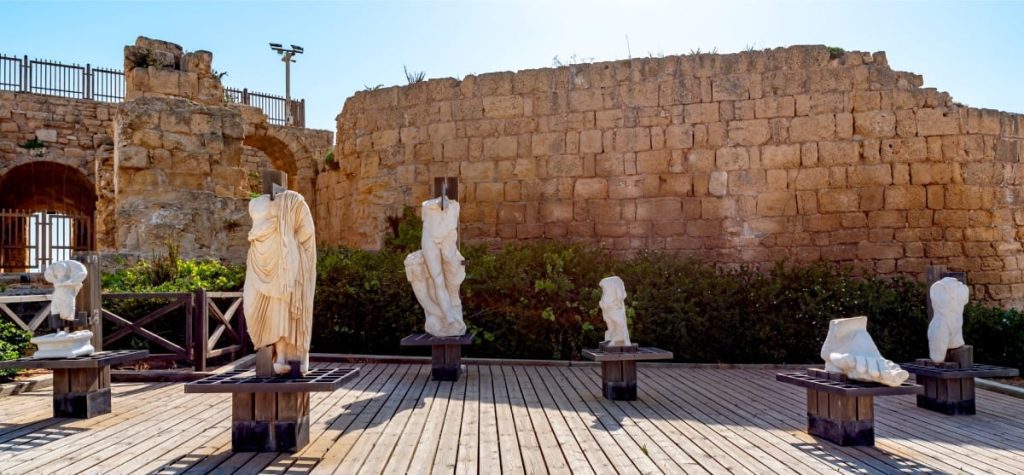
“In Christianity, the ram, like the lamb, represents the faithful, or Jesus himself, whose anguish and death was meant according to Christian belief to atone for original sin (the origin of the image is in John 29:1).” by the same token it could also be earlier, from the Roman period, and was incorporated in secondary use in the church structure. The ram appeared alongside the Greek gods Hermes and Mercury in Roman art, and it was a representation of the god Amun in Egyptian mythology.
Last But Not Least!
Another one among the greatest archaeological discoveries in Caesarea, to my opinion, is this huge foot! (see photo below) But what is it exactly? where exactly it was found? well, it’s all got to do with the Roman port of Caesarea! The port is named by its founder Herod the Great in honor of Caesar Augustus (Herod’s patron). The port of Caesarea was named Limen Sebastos by Herod, Sebastos being the Greek equivalent of Augustus (in Latin).
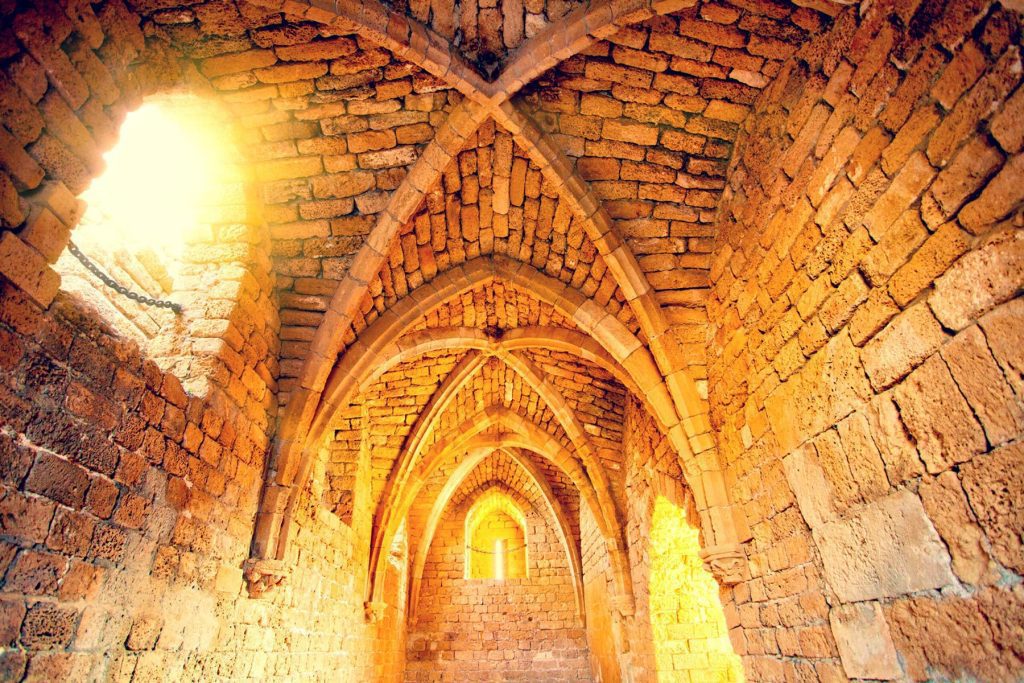
Josephus, the Roman historian, gives us a hint about this gigantic foot. He says:
“At the harbor entrance were colossal statues, three on either side, set up on columns. A massively built tower (Pyrgos) supported the columns on the port side of boats entering the harbor, those on the starboard side, two upright blocks of stone yoked together, higher than the tower on the right side.”
Josephus, Jewish Wars 1.411-13
The earliest investigations of the ancient harbor of Sebastos were made in 1959 when Edwin Link and his wife Marion came to Israel to explore the port of Caesarea Maritima. The underwater remains of the submerged breakwaters may be seen from the air on clear days and calm sea. At the terminus of one of the breakwaters, Link had discovered very large blocks that had been fastened together by iron clamps set in lead sockets. Link thought that these blocks might have been the remains of the colossal statues mentioned by Josephus, to adorn the harbor entrance.
Therefore we believe this foot might have been belonging to one of these statues. Probably the statues were one of the Roman gods like Jupiter. Perhaps one of the statues was Augustus himself.
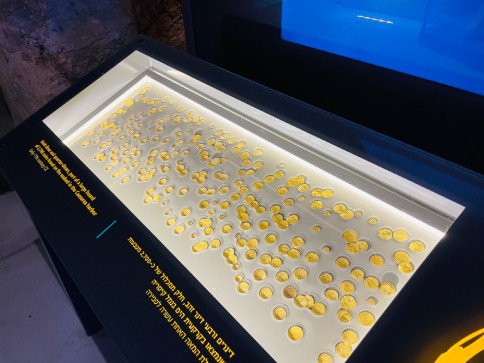
The Cultic Area in Caesarea: The Genoa Chalice
The Sacro Catino, kept in Genoa Cathedral, is a hexagonal dish of the Roman era made of green Egyptian glass. In fact, it was taken to Genoa by Guglielmo Embriaco as part of the spoils from the conquest of Caesarea in 1101. William of Tyre (10.16) describes it as a “vessel of the greenest color, in the shape of a serving dish” which the Genoese thought to be made of emerald and accepted as their share of the spoils.
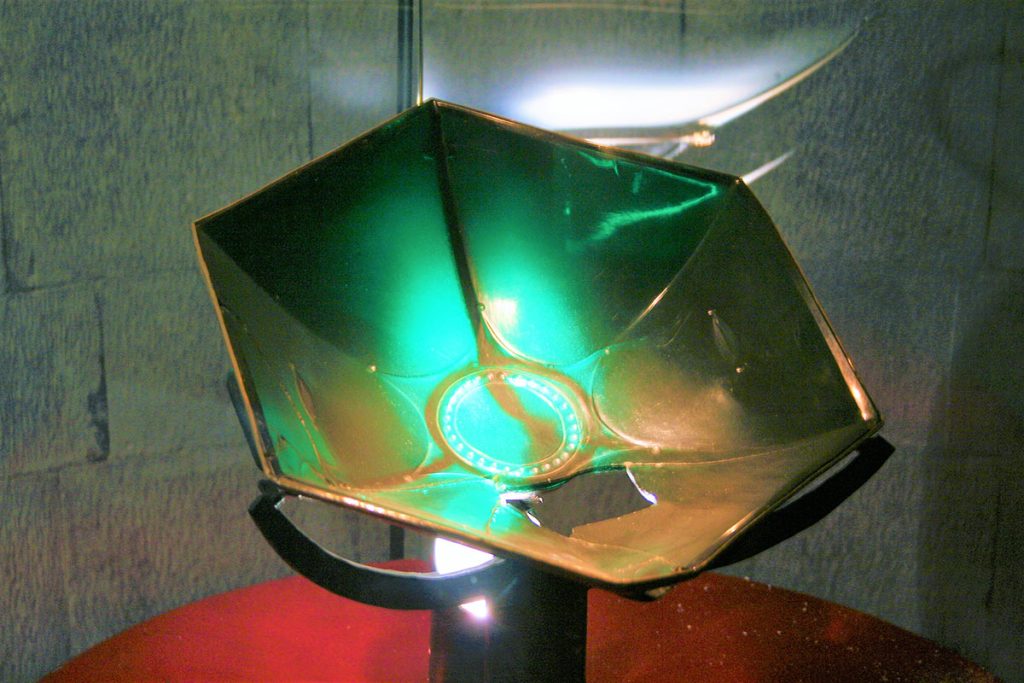
William states that the Genoese were still exhibiting the bowl, insisting on its miraculous properties due to its being made of emerald in his day, the implication being that emerald was thought to have miraculous properties of their own in medieval lore and not that the bowl was thought of as a holy relic. The Sacro Catino would later become identified as the Holy Grail.
The first explicit claim to this effect is found in the Chronicon by Jacobus de Voragine, written in the 1290s. Pedro Tafur, who visited Genoa in 1436, reported that the Holy Grail, “made of a single emerald” is kept in Genoa Cathedral. The bowl was seized and taken to Paris by Napoleon in 1805, and it was damaged when it was returned to Genoa in 1816, on which occasion it was confirmed it is made of glass rather than emerald.







